-
 Bitcoin
Bitcoin $85,034.7515
0.87% -
 Ethereum
Ethereum $1,878.5720
-0.11% -
 Tether USDt
Tether USDt $0.9997
-0.02% -
 XRP
XRP $2.1173
-2.71% -
 BNB
BNB $603.7936
-2.09% -
 Solana
Solana $125.8960
-2.16% -
 USDC
USDC $1.0000
0.00% -
 Dogecoin
Dogecoin $0.1717
-1.15% -
 Cardano
Cardano $0.6803
-0.05% -
 TRON
TRON $0.2371
1.16% -
 Toncoin
Toncoin $4.0680
-1.64% -
 Chainlink
Chainlink $13.6041
-2.67% -
 UNUS SED LEO
UNUS SED LEO $9.3977
2.15% -
 Stellar
Stellar $0.2673
-2.41% -
 Avalanche
Avalanche $19.4065
-1.12% -
 Sui
Sui $2.4228
0.28% -
 Shiba Inu
Shiba Inu $0.0...01239
-4.17% -
 Hedera
Hedera $0.1682
-1.91% -
 Polkadot
Polkadot $4.1064
-3.13% -
 Litecoin
Litecoin $82.6894
-3.10% -
 MANTRA
MANTRA $6.1952
-1.48% -
 Bitcoin Cash
Bitcoin Cash $306.4058
-2.56% -
 Bitget Token
Bitget Token $4.6047
-1.08% -
 Dai
Dai $1.0000
-0.01% -
 Ethena USDe
Ethena USDe $0.9999
0.02% -
 Pi
Pi $0.6782
-5.17% -
 Hyperliquid
Hyperliquid $13.4844
-1.67% -
 Monero
Monero $215.4922
-1.00% -
 Uniswap
Uniswap $6.1086
-1.70% -
 Aptos
Aptos $5.2965
-1.83%
How to define overbought and oversold areas of KDJ indicator?
The KDJ indicator, a momentum oscillator, helps traders spot overbought and oversold conditions in crypto markets by analyzing the K, D, and J lines.
Apr 01, 2025 at 06:42 am
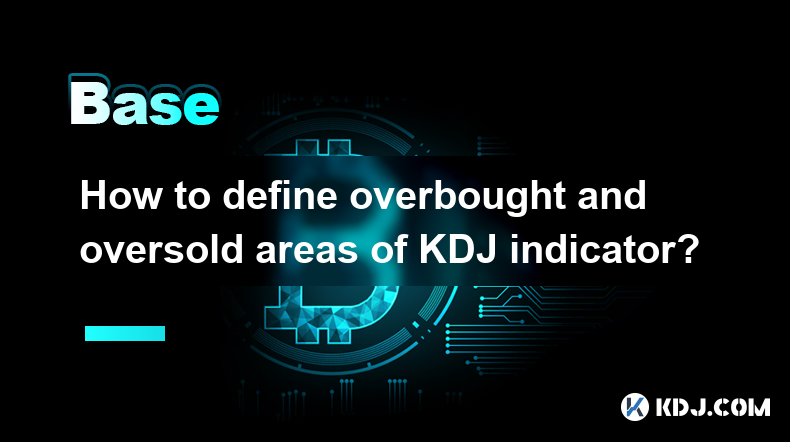
The KDJ indicator, also known as the Stochastic Oscillator, is a popular technical analysis tool used by traders to identify potential overbought and oversold conditions in the cryptocurrency market. Understanding how to define these areas can help traders make more informed decisions about when to buy or sell their assets. In this article, we will explore the KDJ indicator in detail, explaining its components, how to calculate it, and how to use it to identify overbought and oversold areas.
What is the KDJ Indicator?
The KDJ indicator is a momentum oscillator that measures the relationship between an asset's closing price and its price range over a specific period. It consists of three lines: the K line, the D line, and the J line. The K line represents the fastest line and is calculated based on the highest high and lowest low of a given period. The D line is a moving average of the K line, and the J line is a more sensitive line that is calculated using the K and D lines.
Components of the KDJ Indicator
- K Line: The K line is calculated using the formula: K = (Current Close - Lowest Low) / (Highest High - Lowest Low) 100. This line oscillates between 0 and 100 and is used to identify the current position of the price within its recent range.
- D Line: The D line is a simple moving average of the K line, typically calculated over three periods. It is used to smooth out the K line and provide a more reliable signal.
- J Line: The J line is calculated using the formula: J = 3D - 2K. This line is more sensitive than the K and D lines and can provide early signals of potential trend changes.
Calculating the KDJ Indicator
To calculate the KDJ indicator, you need to follow these steps:
- Determine the highest high and lowest low of the chosen period.
- Calculate the K line using the formula mentioned above.
- Calculate the D line as a three-period simple moving average of the K line.
- Calculate the J line using the formula: J = 3D - 2K.
Identifying Overbought and Oversold Areas
The KDJ indicator is used to identify overbought and oversold conditions in the market. These conditions occur when the price of an asset has moved too far in one direction and is likely to reverse. The traditional thresholds for overbought and oversold areas are as follows:
- Overbought: When the K line crosses above 80, it is considered an overbought condition. This suggests that the asset's price may have risen too quickly and could be due for a correction.
- Oversold: When the K line crosses below 20, it is considered an oversold condition. This suggests that the asset's price may have fallen too quickly and could be due for a rebound.
Using the KDJ Indicator in Trading
Traders use the KDJ indicator to make buy and sell decisions based on the signals it provides. Here are some common strategies:
- Buy Signal: A buy signal is generated when the K line crosses above the D line in the oversold area (below 20). This suggests that the asset's price may be about to rebound.
- Sell Signal: A sell signal is generated when the K line crosses below the D line in the overbought area (above 80). This suggests that the asset's price may be about to correct.
Combining the KDJ Indicator with Other Tools
While the KDJ indicator can be a powerful tool on its own, it is often used in conjunction with other technical indicators to confirm signals and improve trading accuracy. Some common indicators that traders use alongside the KDJ include:
- Moving Averages: Moving averages can help confirm trends and provide additional support and resistance levels.
- Relative Strength Index (RSI): The RSI is another momentum oscillator that can help confirm overbought and oversold conditions.
- MACD: The Moving Average Convergence Divergence (MACD) indicator can help identify potential trend changes and confirm KDJ signals.
Practical Example of Using the KDJ Indicator
Let's consider a practical example of how to use the KDJ indicator to identify overbought and oversold areas in the cryptocurrency market. Suppose we are analyzing the price of Bitcoin (BTC) over a 14-day period.
- Step 1: Calculate the highest high and lowest low of the 14-day period.
- Step 2: Calculate the K line using the formula: K = (Current Close - Lowest Low) / (Highest High - Lowest Low) 100.
- Step 3: Calculate the D line as a three-period simple moving average of the K line.
- Step 4: Calculate the J line using the formula: J = 3D - 2K.
After calculating the KDJ values, we can plot them on a chart and look for overbought and oversold conditions. If the K line crosses above 80, we can consider it an overbought condition and potentially look for a sell signal. If the K line crosses below 20, we can consider it an oversold condition and potentially look for a buy signal.
Limitations of the KDJ Indicator
While the KDJ indicator can be a valuable tool for traders, it is important to be aware of its limitations. Some of the key limitations include:
- False Signals: The KDJ indicator can generate false signals, especially in choppy or sideways markets. It is important to use other indicators to confirm signals and avoid acting on false signals.
- Lag: The KDJ indicator is a lagging indicator, meaning it may not always provide timely signals. Traders should be aware of this and use other tools to confirm trends and potential reversals.
- Over-reliance: Relying solely on the KDJ indicator can lead to poor trading decisions. It is important to use it in conjunction with other technical analysis tools and consider fundamental factors as well.
Adjusting the KDJ Indicator Settings
Traders can adjust the settings of the KDJ indicator to suit their trading style and the specific market they are analyzing. Some common adjustments include:
- Period Length: The default period length for the KDJ indicator is 14 days, but traders can adjust this to shorter or longer periods depending on their trading strategy.
- Overbought and Oversold Thresholds: The traditional thresholds for overbought and oversold conditions are 80 and 20, respectively. However, traders can adjust these thresholds to better suit the volatility of the market they are trading.
- Smoothing Periods: The D line is typically calculated as a three-period simple moving average of the K line, but traders can adjust this to a different number of periods to smooth out the indicator further.
Advanced KDJ Strategies
Advanced traders may use more complex strategies with the KDJ indicator to improve their trading performance. Some of these strategies include:
- Divergence: Divergence occurs when the price of an asset moves in the opposite direction of the KDJ indicator. Bullish divergence occurs when the price makes lower lows while the KDJ makes higher lows, suggesting a potential reversal to the upside. Bearish divergence occurs when the price makes higher highs while the KDJ makes lower highs, suggesting a potential reversal to the downside.
- Crossing of the J Line: Some traders use the J line to generate additional signals. A buy signal is generated when the J line crosses above 0, and a sell signal is generated when the J line crosses below 100.
- Multiple Timeframes: Using the KDJ indicator on multiple timeframes can help traders identify stronger signals and confirm trends. For example, a trader might use the KDJ on both a daily and hourly chart to confirm a buy or sell signal.
Common Mistakes to Avoid
When using the KDJ indicator, traders should be aware of common mistakes that can lead to poor trading decisions. Some of these mistakes include:
- Ignoring Market Context: The KDJ indicator should be used in the context of the overall market trend. Ignoring the broader market context can lead to false signals and poor trading decisions.
- Overtrading: The KDJ indicator can generate frequent signals, especially in volatile markets. Overtrading based on these signals can lead to excessive transaction costs and poor performance.
- Ignoring Other Indicators: Relying solely on the KDJ indicator without considering other technical indicators can lead to false signals and missed opportunities. It is important to use the KDJ in conjunction with other tools to confirm signals and improve trading accuracy.
Conclusion
The KDJ indicator is a powerful tool that can help traders identify overbought and oversold conditions in the cryptocurrency market. By understanding its components, how to calculate it, and how to use it in trading, traders can make more informed decisions and improve their trading performance. However, it is important to be aware of its limitations and use it in conjunction with other technical analysis tools to confirm signals and avoid false signals.
Frequently Asked Questions
Q: What is the KDJ indicator?
A: The KDJ indicator, also known as the Stochastic Oscillator, is a momentum oscillator used in technical analysis to identify potential overbought and oversold conditions in the market. It consists of three lines: the K line, the D line, and the J line.
Q: How is the KDJ indicator calculated?
A: The KDJ indicator is calculated using the following steps:
- Determine the highest high and lowest low of the chosen period.
- Calculate the K line using the formula: K = (Current Close - Lowest Low) / (Highest High - Lowest Low) * 100.
- Calculate the D line as a three-period simple moving average of the K line.
- Calculate the J line using the formula: J = 3D - 2K.
Q: What are the traditional thresholds for overbought and oversold conditions using the KDJ indicator?
A: The traditional thresholds for overbought and oversold conditions using the KDJ indicator are as follows:
- Overbought: When the K line crosses above 80.
- Oversold: When the K line crosses below 20.
Q: How can traders use the KDJ indicator to generate buy and sell signals?
A: Traders can use the KDJ indicator to generate buy and sell signals as follows:
- Buy Signal: A buy signal is generated when the K line crosses above the D line in the oversold area (below 20).
- Sell Signal: A sell signal is generated when the K line crosses below the D line in the overbought area (above 80).
Q: What are some limitations of the KDJ indicator?
A: Some limitations of the KDJ indicator include:
- False Signals: The KDJ indicator can generate false signals, especially in choppy or sideways markets.
- Lag: The KDJ indicator is a lagging indicator, meaning it may not always provide timely signals.
- Over-reliance: Relying solely on the KDJ indicator can lead to poor trading decisions.
Q: Can the settings of the KDJ indicator be adjusted?
A: Yes, traders can adjust the settings of the KDJ indicator to suit their trading style and the specific market they are analyzing. Common adjustments include the period length, overbought and oversold thresholds, and smoothing periods.
Q: What are some advanced strategies for using the KDJ indicator?
A: Some advanced strategies for using the KDJ indicator include:
- Divergence: Identifying bullish and bearish divergence between the price and the KDJ indicator.
- Crossing of the J Line: Using the J line to generate additional buy and sell signals.
- Multiple Timeframes: Using the KDJ indicator on multiple timeframes to confirm signals and identify stronger trends.
Disclaimer:info@kdj.com
The information provided is not trading advice. kdj.com does not assume any responsibility for any investments made based on the information provided in this article. Cryptocurrencies are highly volatile and it is highly recommended that you invest with caution after thorough research!
If you believe that the content used on this website infringes your copyright, please contact us immediately (info@kdj.com) and we will delete it promptly.
- Sony Electronics Singapore Announces Support for USD Coin (USDC) Payments
- 2025-04-02 17:35:12
- Dogecoin (DOGE) Poised for 270% Rally as Key Pattern Emerges
- 2025-04-02 17:35:12
- Bitcoin (BTC) Price Today Rises Above $84k!
- 2025-04-02 17:30:12
- Institutional Adoption Is Shaping Bitcoin's Market Value
- 2025-04-02 17:30:12
- 2025 List Identifies 3008 Billionaires, Including 16 Crypto Moguls
- 2025-04-02 17:25:12
- XRP Price Prediction: Will the SEC's Closed Meeting on April 3 Determine the Remittance Token's Near-Term Trajectory?
- 2025-04-02 17:25:12
Related knowledge
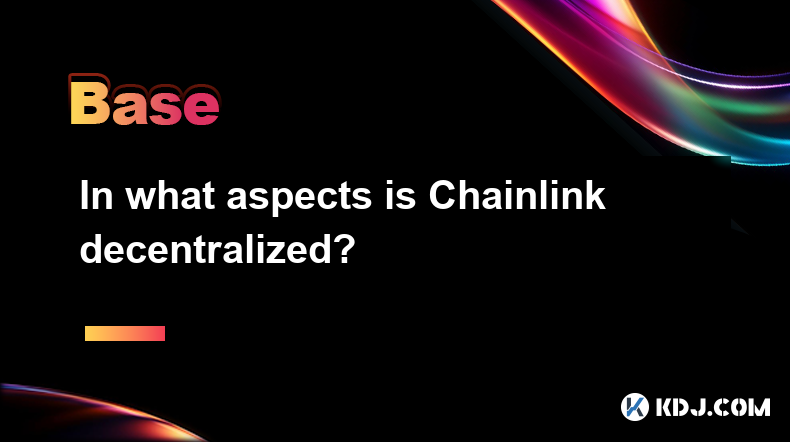
In what aspects is Chainlink decentralized?
Apr 02,2025 at 05:49pm
Chainlink is a decentralized oracle network that plays a crucial role in connecting smart contracts on blockchain networks with real-world data. Its decentralization is reflected in multiple aspects, ensuring the network's security, reliability, and integrity. This article delves into the various ways Chainlink achieves decentralization, including its n...

How does Chainlink connect smart contracts with real-world data?
Apr 02,2025 at 03:56pm
Chainlink is a decentralized oracle network that plays a crucial role in connecting smart contracts on blockchain platforms with real-world data. Smart contracts are self-executing contracts with the terms of the agreement directly written into code, but they can only interact with on-chain data. To access real-world data, such as stock prices, weather ...
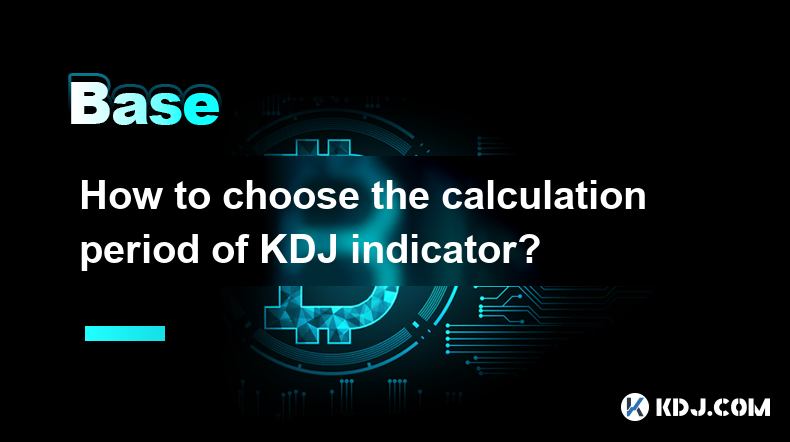
How to choose the calculation period of KDJ indicator?
Apr 02,2025 at 01:00pm
The KDJ indicator, also known as the Stochastic Oscillator, is a popular technical analysis tool used by cryptocurrency traders to identify potential buy and sell signals. The calculation period of the KDJ indicator is crucial in determining its effectiveness in predicting market trends. In this article, we will explore the factors to consider when choo...
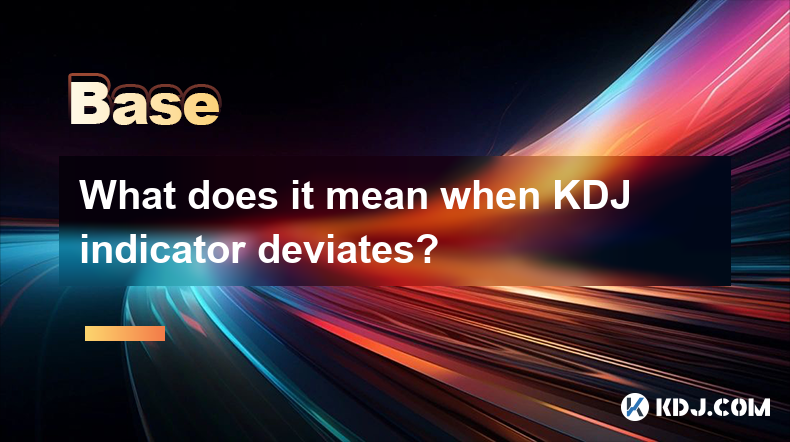
What does it mean when KDJ indicator deviates?
Apr 01,2025 at 03:08pm
The KDJ indicator, also known as the Stochastic Oscillator, is a popular technical analysis tool used in the cryptocurrency market to predict price movements. When the KDJ indicator deviates, it means that the current price of a cryptocurrency is moving away from its typical range, as indicated by the KDJ lines. This deviation can signal potential trend...
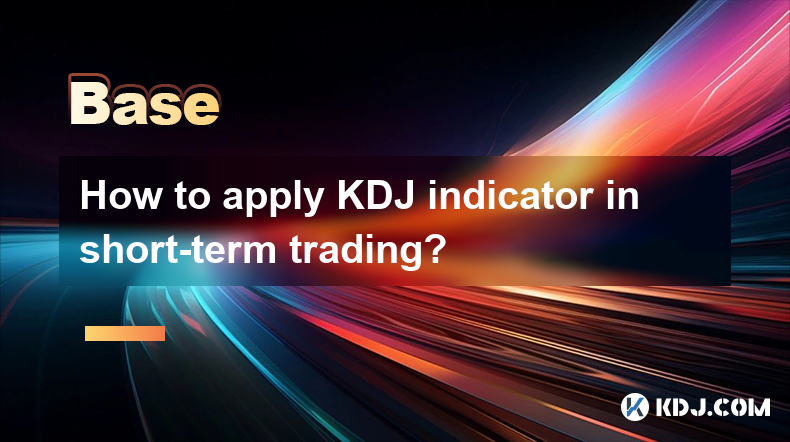
How to apply KDJ indicator in short-term trading?
Mar 31,2025 at 10:28pm
The KDJ indicator, also known as the Stochastic Oscillator, is a popular technical analysis tool used by traders to identify potential buy and sell signals in the cryptocurrency market. In short-term trading, the KDJ indicator can be particularly useful due to its sensitivity to price movements. This article will explore how to effectively apply the KDJ...
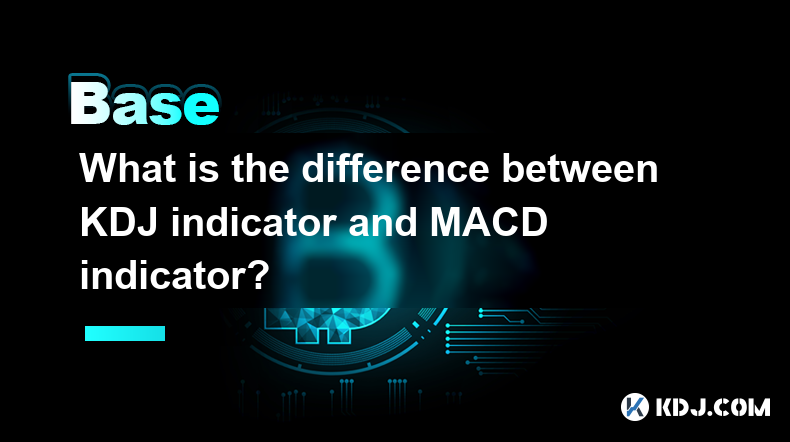
What is the difference between KDJ indicator and MACD indicator?
Apr 01,2025 at 08:21pm
The KDJ indicator and the MACD indicator are two popular technical analysis tools used by cryptocurrency traders to predict market trends and make informed trading decisions. While both indicators aim to help traders identify potential buy and sell signals, they differ in their construction, interpretation, and application. In this article, we will expl...

In what aspects is Chainlink decentralized?
Apr 02,2025 at 05:49pm
Chainlink is a decentralized oracle network that plays a crucial role in connecting smart contracts on blockchain networks with real-world data. Its decentralization is reflected in multiple aspects, ensuring the network's security, reliability, and integrity. This article delves into the various ways Chainlink achieves decentralization, including its n...

How does Chainlink connect smart contracts with real-world data?
Apr 02,2025 at 03:56pm
Chainlink is a decentralized oracle network that plays a crucial role in connecting smart contracts on blockchain platforms with real-world data. Smart contracts are self-executing contracts with the terms of the agreement directly written into code, but they can only interact with on-chain data. To access real-world data, such as stock prices, weather ...

How to choose the calculation period of KDJ indicator?
Apr 02,2025 at 01:00pm
The KDJ indicator, also known as the Stochastic Oscillator, is a popular technical analysis tool used by cryptocurrency traders to identify potential buy and sell signals. The calculation period of the KDJ indicator is crucial in determining its effectiveness in predicting market trends. In this article, we will explore the factors to consider when choo...

What does it mean when KDJ indicator deviates?
Apr 01,2025 at 03:08pm
The KDJ indicator, also known as the Stochastic Oscillator, is a popular technical analysis tool used in the cryptocurrency market to predict price movements. When the KDJ indicator deviates, it means that the current price of a cryptocurrency is moving away from its typical range, as indicated by the KDJ lines. This deviation can signal potential trend...

How to apply KDJ indicator in short-term trading?
Mar 31,2025 at 10:28pm
The KDJ indicator, also known as the Stochastic Oscillator, is a popular technical analysis tool used by traders to identify potential buy and sell signals in the cryptocurrency market. In short-term trading, the KDJ indicator can be particularly useful due to its sensitivity to price movements. This article will explore how to effectively apply the KDJ...

What is the difference between KDJ indicator and MACD indicator?
Apr 01,2025 at 08:21pm
The KDJ indicator and the MACD indicator are two popular technical analysis tools used by cryptocurrency traders to predict market trends and make informed trading decisions. While both indicators aim to help traders identify potential buy and sell signals, they differ in their construction, interpretation, and application. In this article, we will expl...
See all articles

























































































